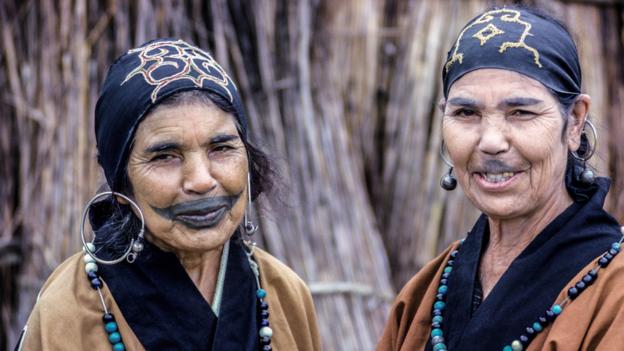“This is our bear hut,” the short, vivacious woman shouted through a hand-held loudspeaker, her smile creasing her forehead with deep wrinkles. A blue hat was perched on her head and her short tunic, embroidered with pink geometric designs, was tied sharply at the waist. She pointed at a wooden structure made of round logs, raised high above the ground on stilts.
“We caught the bears as cubs and raised them as a member of the family. They shared our food and lived in our village. When the time came, we set one free back into nature and killed the other to eat.”
Having treated the bear well in life, her people believe the spirit of the sacred animal, which they worship as a deity, will ensure the continued good fortune of their community.
Kimiko Naraki is 70 but looks decades younger. She is Ainu, an indigenous people who now live mostly on Hokkaido, Japan’s northernmost island, but whose lands once spanned from northern Honshu (the Japanese mainland) north to Sakhalin and the Kuril Islands (which are now a disputed part of the Russian Federation). The Ainu have long been of interest to anthropologists because of their cultural, linguistic and physical identity, but most travellers will not have heard of them. That’s because although they were the earliest settlers of Hokkaido, they were oppressed and marginalised by Japanese rule for centuries.
